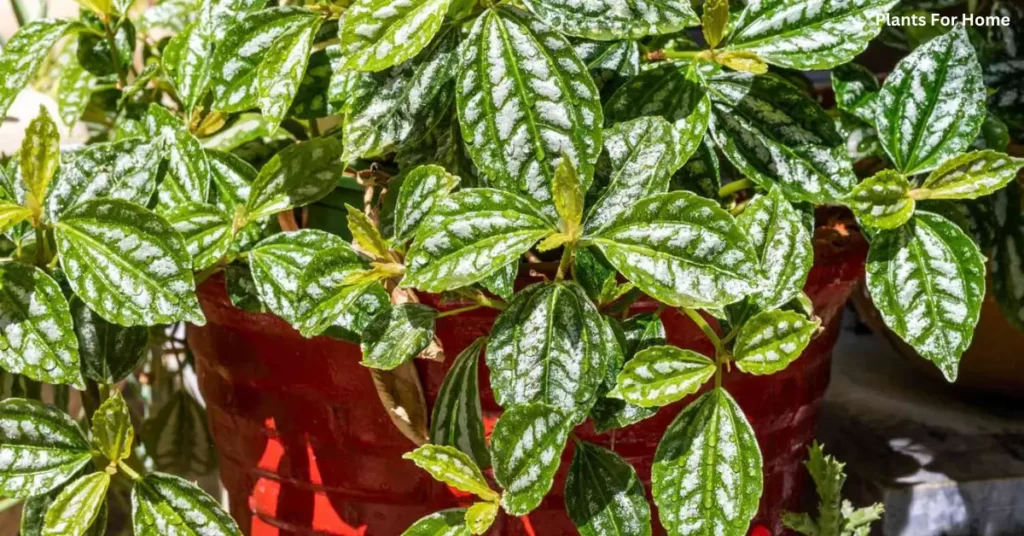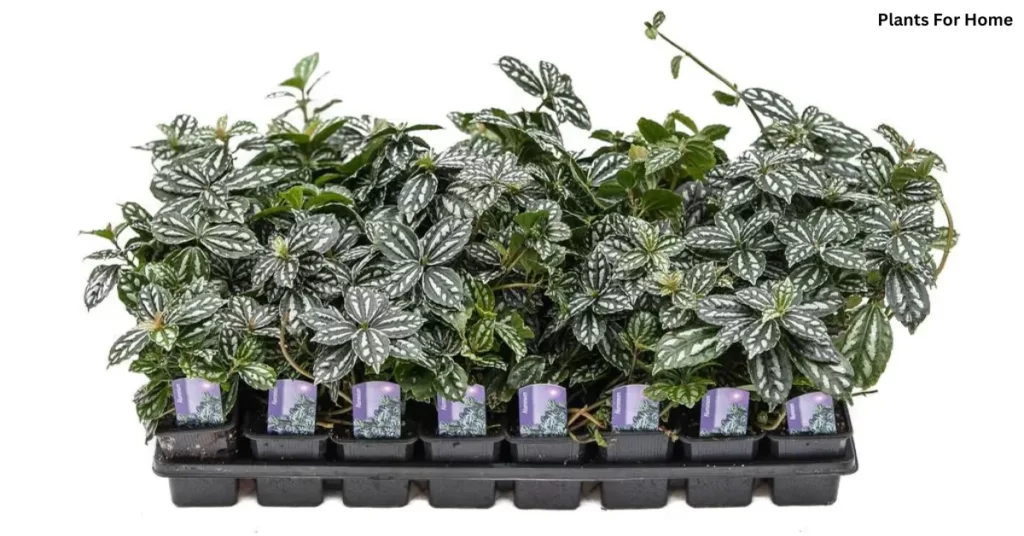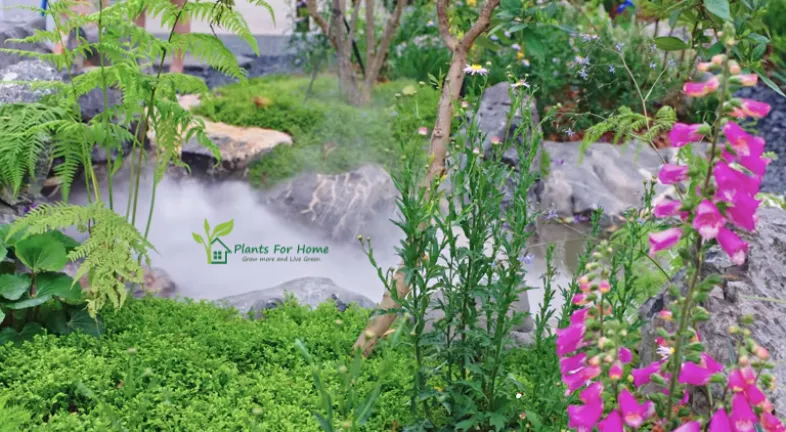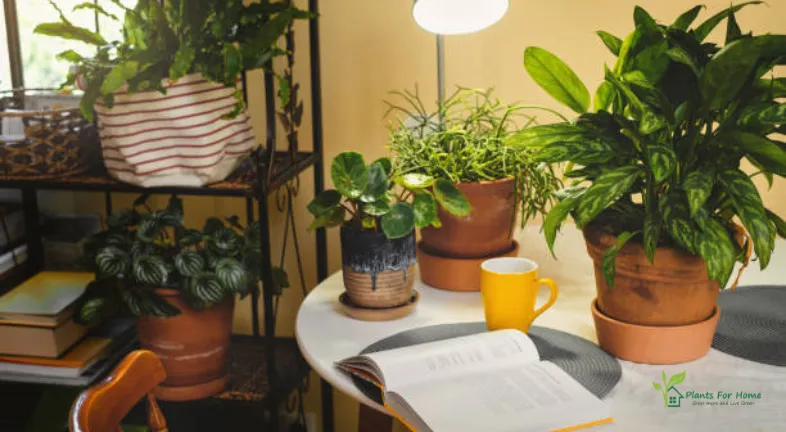
An easy-going houseplant that is usually easy to please is the aluminum plant. For many years to come, the Pilea cadierei plant will be a gorgeous addition to your indoor garden as long as it receives the water and sunlight it needs.
This native to China and Vietnam has wide, bushy leaves with silvery patterns that make it a great houseplant.
The aluminum plant can grow in its container for up to four years before dying because of its easygoing character and absence of serious growth issues. Its leaves are green and silver in color. Typically, leaves are broad and squat, with a maximum length of 12 inches (30 cm) and a maximum width of 8 inches (21 cm) on the body.
Because of its large root structure, containers may break if it is not given enough room. To repot before pot breakage happens, this root system needs to be examined annually.
How it appears:
The individual leaves spread out in an umbrella pattern as they grow from the ground to their typical size. The beauty of this plant lies in its leaves. Every leaf has a different pattern of silver, which together form a stunning tapestry of shapes on the entire plant.
These plants will occasionally bloom, but the tiny, uninteresting blooms are their only feature. Trimming stems back to half their length in the spring will promote continuing, healthy growth.
Pruning and flowering:

This plant generally does not blossom. However, yearly pruning to half the typical length of the stem is necessary to promote healthy leaf growth. This keeps the plant from growing too stringy-looking and encourages it to keep generating leaves at a healthy rate.
If your plant does produce blooms, cut off the blossoms at the buds. For the plant, they are a waste of energy.
Temperature:

60–75 oF (15–23 oC) is the ideal range for Pilea cadierei throughout the year. Short-term exposures outside of this temperature range are acceptable, but prolonged exposure will result in the plant’s death.
Light:
This plant needs four hours a day of bright, indirect sunshine at least. Keep this plant out of direct sunshine and excessive brightness. The leaves will burn from too much sun exposure, turning the green sections brown.
Watering:
Depending on the season, the aluminum plant requires different types of watering. It is important to keep the top quarter inch of soil moist in the spring and summer. When watering again in the fall and winter, let the top quarter-inch of soil dry out. Make sure there is no standing water in the saucer beneath the plant.
Soil:
To thrive, this plant needs a sandy soil mixture. To give the necessary soil content for ongoing health, mix one-part clean sand (or perlite) with two parts peat.
Re-Potting:
Each spring, measure the Pilea cadierei roots’ density. Move the plant to a larger pot if the roots are getting too dense. If you don’t, the container will be broken by the root system’s search for extra space to spread out.
Humidity:
Cuttings are used in the propagation of this plant. In the early spring, take the cuttings. Let them soak for a week or until roots start to develop in a water source. Next, transfer to a sandy soil combination in a container of their own.
Propagation:
Cuttings are used in the propagation of this plant. In the early spring, take the cuttings. Let them soak for a week or until roots start to develop in a water source. Next, transfer to a sandy soil combination in a container of their own.
HERE AE THE COMMON PROBLEMS FACED BY PILEA CADIEREI:

Occasionally, bugs will consume the green portions of leaves. Look out for insects and get rid of them as necessary.
Plants can occasionally get blight, a condition known as plant disease. Usually, it starts with a single leaf and turns it rotten and brown. To stop it from spreading to the rest of the plant, cut off this stem.
Overexposure to direct sunlight causes leaves to sunburn and turn yellow. Remove any burnt leaves from the plant and relocate it right away to a more shaded area.
While it is poisonous to dogs and cats, this plant is safe for people to be near. If your pets are allowed to roam freely, you might want to put this plant somewhere they can’t get it.
Its maximum height is one to two feet. Because of this, it’s the ideal decorative plant because it won’t take up much room and can fit almost anywhere.
Despite its origins in hot North Africa, the aluminum plant is not sensitive to the humidity of its environment. This plant will thrive at room temperature, and you shouldn’t need to adjust the humidity level. You can, however, sprinkle the leaves with clean water if your house is extremely dry in the winter.
As strange as it may seem, this is quite typical. Your aluminum plant will shed some of its older leaves to make place for new ones as it develops and flourishes. This is a normal process that indicates you’re giving your aluminum plant the proper care. It’s only when the leaves start to change appearance that you should start to worry. They can be receiving too much sunshine if they start to turn brown, or you might be overwatering them if they start to turn yellow.
CONCLUSION:
An excellent illustration of a statement piece is the Aluminum Plant. It’s unusual, the distinctive leaves give it a wonderful decorative appearance, and because it’s little, it can add brightness to any space.
The aluminum facility has a very laid-back atmosphere. It will receive indirect sunlight all day long if you put it in a bright room. If you want to keep the beautiful leaves on this plant from browning and burning, keep it out of direct sunlight.
This plant doesn’t require a strict watering schedule, but you should make sure the top layer of soil stays moist in the summer and let it dry out in the winter. Never let the plant sit in the water; this means that it needs to be watered.











